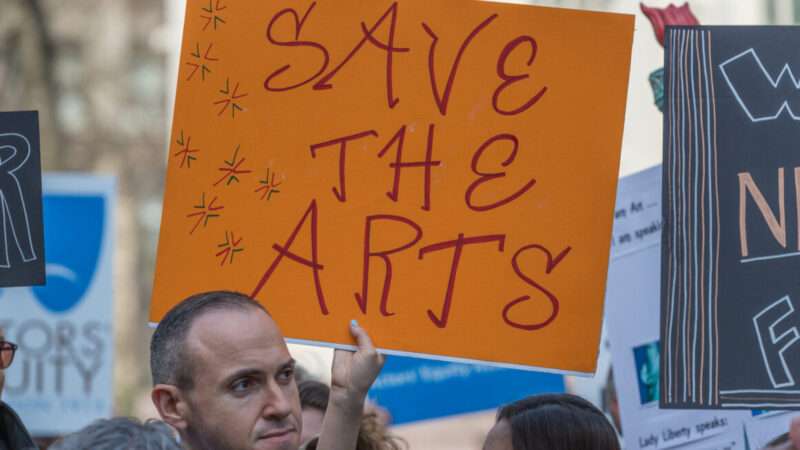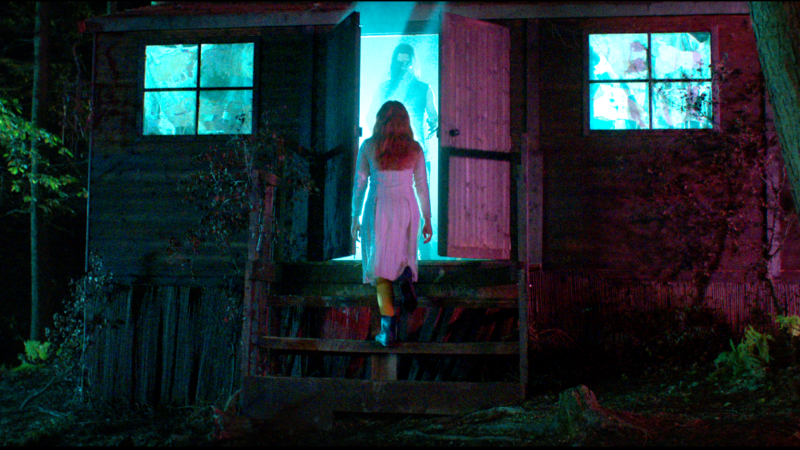The second edition of Free-Range Kids comes out on June 16. I wrote the first edition 12 years ago, after my column about letting my nine-year-old ride the subway alone became national news and I got dubbed “America’s Worst Mom.” Since then, I’ve been fighting for childhood independence alongside some fierce allies, including Reason.
What has changed in the past dozen years, for better or for worse, when it comes to childhood freedom?
What’s Getting Worse
Kids are being treated like babies for even longer stretches. When Jonathan Haidt, co-author of The Coddling of the American Mind, gives lectures, he often asks audience members born before 1982 to shout out what age they were first allowed to leave the house on their own. Many in the crowd answer eight, seven, or even six. (Personally, I shout “Five!”)
Then, skipping the mishmash of Generation X, he asks everyone born after 1995 to answer the same question, and most of the millennials respond in the 10-13 age range. “The effect is always huge,” says Haidt, a co-founder with me of Let Grow, the nonprofit dedicated to making childhood independence easy, normal, and legal.
This drop-off in autonomy can be traced to several factors.
Crime: Even though crime began to plummet in the mid 1990s, Americans just can’t believe it. “In 20 of 24 Gallup surveys conducted since 1993, at least 60 percent of U.S. adults have said there is more crime nationally than there was the year before,” according to Pew Research, despite a general downward trend. (Note: 2020 was a unique year, and crime did increase.)
How big a “downward trend”? Violent crime is about half of what it was in 1991. Yes, pandemic times have pushed crime numbers up, but this misperception of mayhem has been going on for decades and it is just hard to fight fear with reality. If you really believe the world is one big, white van driven by a clown with an Uzi, you don’t let your kids play outside.
Smartphones: These technological tethers are particularly insidious. A Wall Street Journal article titled, literally, “Raising a Free-Range Child in 2020,” suggests equipping the kids with smartwatches that allow parents to track the kids. In fact, one of the pre-installed buttons sends the text: “When are you picking me up?”
A mom interviewed in the Journal piece waxed nostalgic about her childhood down by the creek. Spending time there, “was not just lovely but really important in creating independence and developing confidence,” she said, adding, “I wanted to find a way to recreate that for my daughter.”
So she gave her daughter a high-tech watch. And when the girl’s chain fell off her bike, the girl alerted her dad who immediately came and fixed it.
Presented as a win for autonomy, this is, in fact, the opposite—and the opposite of that mom’s independence-building creek-time. The girl didn’t figure out how to fix her bike, or how to get home without it working. She called childhood’s Triple A: the Always Available Adult.
Constant adult oversight is a stealth reason kids have less autonomy. Parents think they’re giving their kids freedom, but it’s actually a blanket of surveillance and assistance. The kids know they are never truly on their own, and from what I’ve seen, they often become accustomed to it. Being on your own starts to seem scary when it is never the norm.
A 7th grade teacher in the suburbs told me that this spring her students were imagining what it would be like to walk to their quaint downtown shopping area, when one student asked, “What happens if I’m walking or riding my bike and I get stuck on the train tracks?”
This child was 12 or 13.
You almost can’t blame them. (Almost.) Many kids have been picked up and delivered to school and sundry activities all their lives, like UPS packages. Packages can’t get off the train tracks by themselves either.
And of course, the flip side of the tech revolution is another reason kids get so much less freedom. Not only are they obsessively tracked by parents who can check their grades, texts, location, browsing history, school behavior and even body temperature from afar, they also have enough fun tech to keep them inside without going crazy.
Back in the hoary past, if your home was hot, crowded, loud, or boring, your only alternative was to go outside and find someone or something to play with. Now that staying inside is fascinating (hey, it’s a beautiful day and I’m at my computer, too), kids aren’t champing at the bit. When the couch beckons, parents don’t have to worry about their kids flying the coop.
Homework: A 2004 University of Michigan study found kids are spending an extra 7.5 hours a week on schoolwork than they were 20 years earlier. A more recent study found that younger students were getting three times more homework than was recommended by education experts. You can’t ride your bike to the 7-Eleven if you’ve got a math test coming up, science project due, and reading log to fill in. (And, remember, no more hiding your F’s in your pajama drawer, as an unnamed relative of mine did: Your parents can see every grade on every quiz.)
Extracurriculars: Children who might once have had some time to, say, play by the creek, are often now in organized activities. The children’s sports industrial complex has become a $15 billion dollar business (though, once again, COVID-19 has mixed that up some).
The more that kids are in adult-run activities, the more it feels to parents and kids as if it is only natural to always have someone, preferably a specialist, teaching a child something. Free time starts to look like time that could be better spent getting a leg up. Who’s going to get that scholarship: The kid pointlessly climbing a tree or the kid in travel hockey?
911 calls: Many parents worry, quite reasonably, that some busybody could call 911 to report an unattended kid. Next think you know, child services are knocking at the door.
As parents started contacting me to say they had been investigated for letting their kids play at the park, or walk home from the playground, or even shoot hoops in their own backyard, I wrote about their stories. In fact, Reason is the first place the public heard about the Meitivs of Maryland, the Debra Harrell story, and the dad given hard labor for making his son walk home from the grocery store at dusk.
These stories got huge play, which is good—no parent should be second-guessed for making everyday decisions that do not put their kids in serious and likely danger. On the other hand, I never meant to make parents even more worried about their reasonable parenting decisions coming under formal scrutiny. But that does bring me, at last, to the good news about childhood independence.
What’s Getting Better
New laws: Just last month, Oklahoma and Texas, passed so-called Reasonable Childhood Independence bills. These say that kids have the right to some unsupervised time, and parents have the right to give it to them—by choice or by necessity. For instance, if I want my son to feel confident and competent because I let him “free-range,” that’s fine. But a stretched-thin single mom who works two shifts and can’t be home with her seven-year-old for an hour or two after school? She’s covered by the new laws, too. Giving your kid some unsupervised time can no longer be considered neglect when it is simply poverty.
Texas and Oklahoma joined Utah, which had passed the first free-range parenting law in 2018. Let Grow has another five or six states on our radar for next year, and in some of them—Colorado, South Carolina, and Idaho—the bills have already been drafted. Click here if you’d like to see the laws in your state, and here if you’d like to help us get some good ones passed. (And here if you would like to donate to the cause).
New research: The rise in childhood anxiety is so scary and sad that some psychologists and educators are beginning to research novel ways to fight it. Long Island University Psychology Professor Camilo Ortiz is undertaking a study this fall that will treat children diagnosed with anxiety disorder with a dose of independence. He will give these kids the Let Grow Project: The assignment to go home and do something new, on their own, without their parents. If, as I’ve seen happen, the kids grow bolder the more they do some things on their own—run an errand, ride their bike, walk to school—well, then we’ve got a simple, new, free way to help a whole lot of anxious kids and their parents. After all, parents change as much as the kids do, once they see their hothouse flowers blossoming with pride and confidence. A pilot project in the Boston Public Schools this summer will also be measuring The Let Grow Project’s impact on students’ social-emotional growth.
New partners: In 2017, Haidt, Free to Learn author Peter Gray, and Daniel Shuchman, former chairman of the Foundation for Individual Rights in Education (FIRE), and I co-founded Let Grow. All of us were worried that overprotection was undermining kids. Gray and Shuchman were particularly concerned that groups promoting civil discourse and open-mindedness at the university level represented late-stage interventions. So our nonprofit is focused on developing resilience much earlier in childhood, as a vaccine against fragility. Our school programs, thought leadership, advocacy, and outreach are all dedicated to making it easy, normal and legal to give kids back some fortifying independence.
New Word: The phrase Free-Range Kids has made its way into the dictionary. It gives people a name for “a style of child rearing in which parents allow their children to move about without constant adult supervision, aimed at instilling independence and self-reliance,” as Dictionary.com says. Giving kids some freedom to explore, play, and even screw up a bit isn’t slacker parenting or neglect. It’s “Free-Range.”
That sounds like bragging, so I’ll leave it there. The fact is, there are plenty of forces keeping kids inside, supervised, scared, distrusted, and in a way, disabled. (“How will I get off the tracks?”) But there are so many people concerned about stunting a generation’s growth that we are now a force to be reckoned with, too.
And since our way gives kids and parents more freedom, more trust, more power and more hope, we are going to win.

from Latest – Reason.com https://ift.tt/3vjsR4R
via IFTTT





